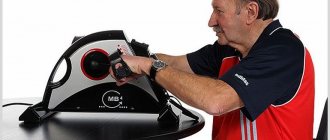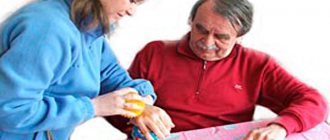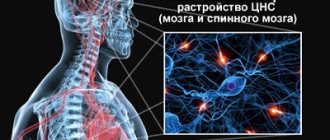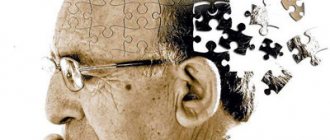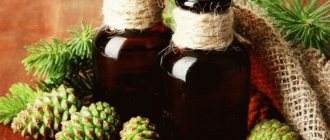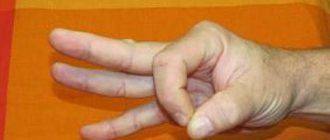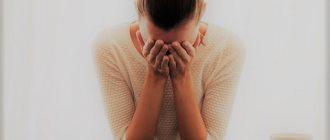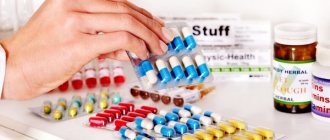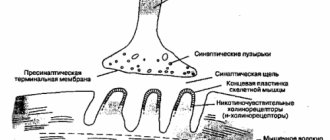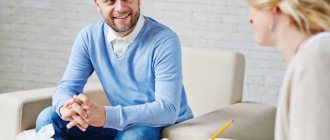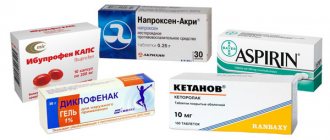Irina Baranova
Cardiologist
Higher education:
Cardiologist
Kuban State Medical University (KubSMU, KubSMA, KubSMI) Level of education - Specialist 1993-1999
Additional education:
“Cardiology”, “Course on magnetic resonance imaging of the cardiovascular system”,
Research Institute of Cardiology named after. A.L. Myasnikova
"Course on functional diagnostics"
NTsSSKh them. A. N. Bakuleva
"Course in Clinical Pharmacology"
Russian Medical Academy of Postgraduate Education
"Emergency Cardiology"
Cantonal Hospital of Geneva, Geneva (Switzerland)
"Therapy course"
Russian State Medical Institute of Roszdrav
Contacts
Rehabilitation after a stroke is a long-term process. It includes therapy using medications, as well as treatment with traditional methods. All folk remedies for stroke should be used after consultation with a doctor as a useful addition to traditional methods.
Recovery period after illness
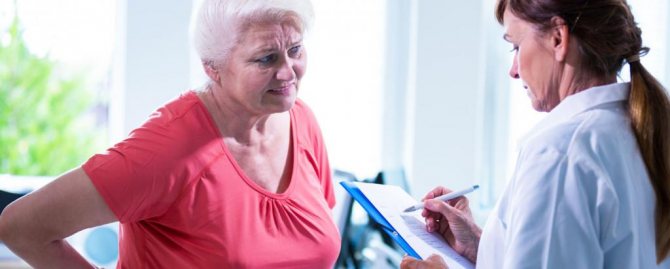
A stroke is a very serious disease that cannot go away without a trace. The disease is dangerous because attacks occur suddenly. For this reason, the patient's life expectancy will depend on how quickly medical care was provided. But even taking into account that the patient received timely assistance, serious consequences or death may occur. The patient's condition in the future depends entirely on the effectiveness of treatment. A person after a stroke needs regular and careful care. It is important to bathe the patient regularly and massage the body. In a hospital setting, all these actions are performed by medical workers, but upon arrival home, all responsibility falls on the shoulders of loved ones. In this case, you cannot do without effective methods of traditional medicine. In some cases, folk recipes are more effective than expensive drugs. The most basic advantage of treating stroke with folk remedies is that herbs rarely cause side effects.
Spasticity (or spasticity) of muscles after a stroke. Ashworth scale
Incidence of spasticity after stroke. Source: Russian Medical Journal, No. 31 from November 20, 2012 Authors: Authors: Shakhparonova N.V. , Kadykov A.S.
Muscle spasticity is a painful increase in muscle tone in the affected limbs. Spasticity or (muscle hypertonicity) is a consequence of deep paresis. Paresis is a decrease in muscle strength as a consequence of a stroke.
Reasons for increased muscle tone after stroke
The reason is the death of nerve cells in the brain that transmit impulses that contract muscles. The built chain of nerve cells from the cerebral cortex to the receptors that contract muscles is called the pyramidal tract.
In addition to generating and transmitting impulses for muscle contraction, these cells regulate muscle tone and inhibit involuntary tension. If the cells of the pyramidal tract are damaged, their inhibitory effect on muscle contraction is lost. The tension is rising.
Muscles begin to become overly tight on average 1-3 months after a stroke in the arm and/or leg on the affected side of the body.
Tense muscles bend the arm at the elbow joint and press it to the body, and the leg is extended at the knee and ankle joints.
Tension in the left arm and leg with spasticity
“The hand is asking, the leg is mowing” - this is what they say about the formed spastic muscle tone after a stroke.
Excessive tension causes pain and heaviness in the limbs, and most importantly, limits movement in them.
The arm and/or leg cannot bend at the joints, gait is impaired, and motor activity decreases.
Ashworth scale. Spasticity assessment
Assessing the magnitude of muscle tone in clinical practice uses the Ashworth scale. The scale also allows you to assess the dynamics of tone during treatment with muscle relaxants
| Points | Characteristics of tone |
| 0 | The tone is not increased |
| 1 | Slight increase in tension at the end of limb movements. |
| 2 | More noticeable hypertonicity, manifested throughout the entire flexion or extension movement. Range of motion preserved |
| 3 | The tone is increased so much that passive flexion and extension are difficult. Range of motion is limited |
| 4 | The limb is fixed in a flexion or extension position. There are no voluntary movements, passive ones are sharply limited or absent |
How to relieve spasticity in an arm (or leg) after a stroke is question No. 1 when increasing muscle tone.
Muscle hypertonicity in the arm and leg makes it difficult to perform exercises to regain movement.
Before you start doing the exercises, you need to relax your muscles and make movements in your limbs freer.
Treatment
⦁ Muscle relaxants are medications that reduce muscle tone. They are prescribed by the attending physician; a correct calculation of the required dose is needed for the best effect and to prevent unwanted side effects on the body. Effective for mild to moderate spasticity.
⦁ Botulinum therapy - injection of botulinum toxin into tense muscles in a strictly calculated dosage. The effect is more pronounced and helps with severe spasticity. Validity period is 2-3 months.
The downside is that the procedure is expensive, the compulsory medical insurance policy does not cover the costs of it, you need a specialist who has undergone additional training - a botulinum therapist.
These should be looked for in rehabilitation and vascular centers, rehabilitation treatment departments
⦁ Warm water – holding your arm and leg under warm water for 10 minutes reduces muscle tone and reduces spasticity
⦁ Ice pack – placed on tense muscle groups for 5-7 minutes reduces muscle tone and facilitates movements in the limbs
⦁ A set of exercises for training the opposite spastic muscle group. A special complex aimed at reducing hypertonicity of spastic muscles and training their antagonists. You need a physical therapy instructor who will tell you exactly what to do and how.
Which method of muscle relaxation is suitable in your case is decided by the attending physician after assessing the tone. According to the Ashworth scale, for example. Taken into account:
- range of motion,
- severity and duration of stroke,
- the presence of contractures,
- contraindications for other diseases
If you find the article useful, share the link on social networks. Click the button below. I will be grateful to you.
[upto]
Sincerely, neurologist Postnikov Alexander Yurievich
You can thank me for the article by subscribing to the channel about neurology and neurorehabilitation. Thank you!
Source: https://insultu-net.ru/spastika-posle-insulta-lechenie-shkala-eshvorta/
Advantages of traditional methods: what are the benefits?
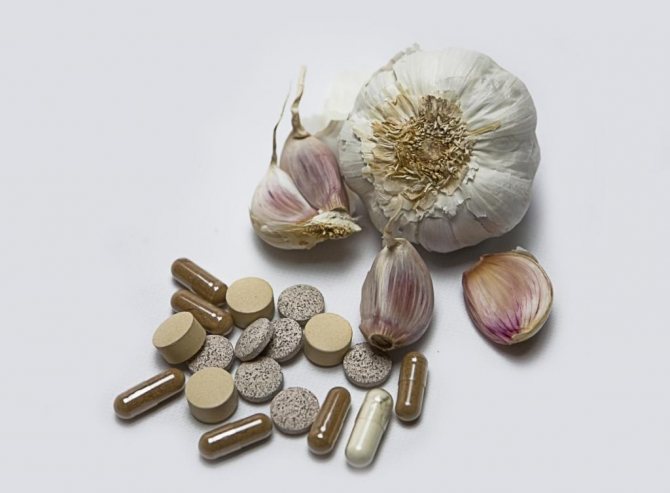
People who have suffered a stroke must also cope with complications after the illness. Many patients lose vital functions. In this case, patients are not able to take care of themselves. In some situations, memory lapses may occur. To improve the general health of the patient and improve blood circulation, traditional medicine methods are used, which are important to use during the rehabilitation period. Among the main advantages of treating stroke with folk remedies are:
- Affordable price. In almost any pharmacy you can find the necessary natural ingredients at an affordable price.
- Ease of use. A folk remedy can be easily prepared. Thanks to this, treatment is carried out in a cozy home atmosphere, and this is especially important for a patient who has suffered a stroke.
- Schedule of procedures. At home, it is much easier to adjust the schedule for performing procedures and taking medications.
- Efficiency. In the process of treating stroke with folk remedies, it is allowed to take medications that will give a greater effect in combination with traditional medicine.
Before using any medicine, you should read the recommendations of your doctors. The dose and duration of administration are determined only by a specialist.
Treatment of spasticity after stroke
Cerebrovascular accidents are a serious medical and social problem throughout the world. Every year, about 15 million strokes are recorded worldwide and 5.5 million people die from them.
During a stroke, the most obvious and visible disorders are the limitation of motor activity. In the vast majority of surviving patients, various hemiparesis are observed, and hemiplegia is observed in 10%.
Spasticity: definition and pathogenesis
This disease is disabling and motor failure is also accompanied by spasticity. Spasticity
includes the following symptoms:
- muscle weakness;
- loss of dexterity of movements;
- muscle spasms;
- increased muscle tone;
- increased tendon reflexes.
Studies have shown that when only the pyramidal tracts of the nervous system are affected, only paresis develops in the limbs, and spasticity
develops as a result of breakdown of many neurophysiological mechanisms. The most important disorder is a breakdown of the mechanism of differentiated regulation of motor neurons located in the spinal cord. In this case, the inhibition of certain processes also occurs.
In the absence of adequate treatment for spasticity over a long period of time, trophic changes in muscles, joints, tendons render the musculoskeletal system unusable, and irreversibly. Symptoms of changes include:
- slowing down movement;
- lengthening of the stance phase;
- reduction in step length and frequency;
- formation of gait asymmetry;
- emergence of a high risk of falls;
- pathological position of the foot develops;
- signs of osteoporosis and osteoarthritis appear. In 15-20% of patients who have suffered a stroke, arthropathy in combination with hemiparesis is observed. Such changes are formed by 1-3 months of post-stroke life. In addition, a paretic limb can cause stretching of the joint capsule with the development of painful pain syndromes.
In connection with these changes, medicine is constantly in search of the most effective methods for correcting this condition. The goals of such therapy should be:
- normalizing the tone of the spinal muscles;
- formation of balance between flexor and extensor muscles;
- stabilization of the spine and limbs. who were involved in the disease.
Therapeutic measures
If the patient’s mood for treatment is reduced, this may not lead to positive results, even with correctly prescribed drug therapy and exercise therapy.
The patient himself simply must be optimistic and go towards the intended goal, otherwise nothing will work out.
Spasticity
after a stroke, adjustments are made in order to improve the functionality of the limbs and lead the patient to a normal life, rather than the existence of a disabled person.
Principles of successful rehabilitation
The following principles are always used in rehabilitation activities:
- the onset should be early - in the first days after the stroke;
- duration of rehabilitation. Breaks are not allowed;
- systematic;
- complexity;
- Participation in the rehabilitation of the patient and his family members should come first.
During rehabilitation, motor activity must be monitored. Rehabilitation programs are always individual for each patient.
Basic methods of treating spasticity
The main treatment methods include:
- physical therapy;
- physiotherapeutic procedures;
- massage;
- use of muscle relaxants;
- using a baclofen pump;
- surgical operations;
- botulinum toxin type A.
The success of treatment depends largely on the degree of damage to the nervous system and the timing of the start of therapy. There is a dependence: the smaller the paresis and the earlier the start of treatment, the more lasting the result will be.
Drug therapy
The main medications are muscle relaxants, which are part of the general rehabilitation program. But don't forget that:
- hypertonicity of the leg extensors often contributes to upright walking;
- after reducing spasticity, patients do not always notice an improvement in their condition with pronounced paretic changes in the limbs;
- normalization of muscle tone in patients with cognitive impairment will not always lead to an increase in motor activity, but patient care may be facilitated.
Quite often, sirdalud is used as a muscle relaxant.
It is a centrally acting muscle relaxant, that is, it acts on the central nervous system, or more precisely on adrenergic receptors. The muscles relax due to the inhibitory effect on the interneurons of the spinal cord.
Sirdalud in its classic release form is used 3-4 times a day, which is not entirely convenient. Therefore, Sirdalud MR was developed, which has 6 mg per capsule and the active substance is released gradually, which automatically reduces the number of its intake per day to once.
At the same time, patients become more adherent to treatment due to this regimen of taking the drug.
Non-drug treatment of the patient
Patients in most cases have to learn to walk, talk and live again after a stroke. However, there are contraindications for active motor rehabilitation, which are worth talking about before studying the issue of rehabilitation itself. Among the contraindications we highlight:
- severe endocrine diseases;
- risk and high probability of thromboembolism;
- respiratory and heart failure of 2-3 degrees with rhythm disturbances;
- malignant tumors;
- threat of bleeding;
- open forms of tuberculosis of the lungs and other areas;
- mental illness;
- renal failure.
Movement therapy
Movement treatment is scientifically called kinesiotherapy. This direction is widely used to correct post-stroke spasticity. Kinesiotherapy includes:
- Physiotherapy. Training of paretic limbs is carried out. Basically, all exercises are aimed at relaxing the muscles of the affected limb, restoring the patient’s ability to sit, stand and walk independently, and preventing the formation of contractures. Passive and passive-active forms of gymnastics are used. The first does not involve the active participation of the patient. The second is carried out with his direct participation. Active gymnastics consists of tensing the muscles that are opposed to the spastic muscles, that is, the antagonist muscles;
- Treatment by position. This method is aimed at reducing and preventing the development of contractures, that is, stiffness of muscles and joints. For example, they carry out exercises for healthy bowels or legs, exercises for the respiratory muscles (inflating a balloon) in order to improve blood circulation and saturation of the body with oxygen. All these measures also contribute to the prevention of thromboembolic complications.
Each activity of a patient after a stroke should be carried out under the control of blood pressure and pulse.
Muscle massage
The massage is carried out according to certain rules:
- spasticity
must be eliminated by stroking. In addition, acupressure is also performed to influence reflexogenic zones; - Antagonist muscles are rubbed and kneaded.
Verticalization
To prepare the patient for standing and walking, the neurosensory verticalization technique is used on a device called a verticalizer. The technique allows you to get rid of many complications from a long stay in a supine position.
Stages of learning to walk
- Learning to walk (imitation) in a lying position;
- Walking with the help of a cane with four supports and the support of an instructor, and then without the support of an instructor;
- Walking along the corridor, up the stairs and along the street.
The distance and duration of walking will depend on the patient’s condition and the individually selected rehabilitation program.
Other techniques
- Forced movement of a paretic arm;
- Transcranial magnetic stimulation;
- Electrical muscle stimulation;
- Acupuncture;
- Mirror therapy;
- Application of cuts and tires. This technique is not used without physical therapy;
- Taping;
- High-tech techniques using a computer.
After a stroke, a single treatment, of course, will not help. Long-term, constant and persistent training and medicinal support for the patient are required. Moreover, if the patient himself does not show interest in his recovery, the effectiveness of the entire rehabilitation treatment will be extremely low.
Preventing stroke before it occurs is also important.
- Anastasia
Source: https://sovdok.ru/?p=4760
What is important to know before using a folk recipe?
Before using any traditional medicine method, you should definitely consult a doctor. It is necessary to undergo regular examination by a specialist. Only a doctor should prescribe treatment for stroke with folk remedies. Before preparing the infusion, you must carefully read the recipe. It is very important to maintain proportions. The order in which ingredients are added should be taken into account. It is not recommended to make your own changes to recipes or replace one component with another. You should read the expiration date carefully before using any herb as serious side effects may occur. Healing substrates in this case will be toxic and cause poisoning. It is equally important to follow the rules for storing the drug.
Medicinal plants
Recovery after a stroke with folk remedies is based on the use of medicinal plants, namely flowers, herbs, roots. They are used to improve blood circulation, tonify and strengthen the body. During the rehabilitation period it is recommended to use:
It is especially important to remember that before you begin recovery after a stroke using folk remedies, you must consult with your doctor. Basically, many medicinal plants complement each other well, providing a pronounced therapeutic effect, but in some cases they can be harmful.
Using arnica against illness
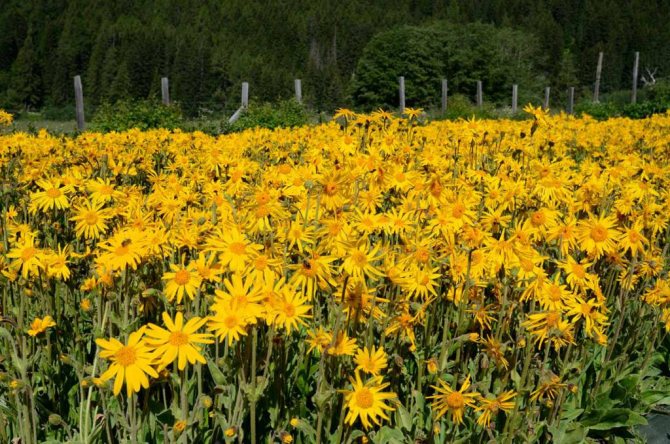
Arnica is somewhat reminiscent of chamomile, but its main difference from other plants is that the flower perfectly improves the functioning of brain vessels and strengthens them well. An infusion of this plant is one of the most effective folk remedies for treating stroke. In addition, the plant has a positive effect on the regeneration of damaged tissue. Arnica can be used to reduce cholesterol levels. The use of infusion is an excellent preventative against stroke. To prepare it you need to add 12 g of herb to a glass of boiling water. Then you should put the mixture on the fire and wait until the drink boils. The mixture should sit for 45 minutes. Approximately 1.5 tbsp. l. is a single dose. The duration of treatment is one or two months.
Sage therapy
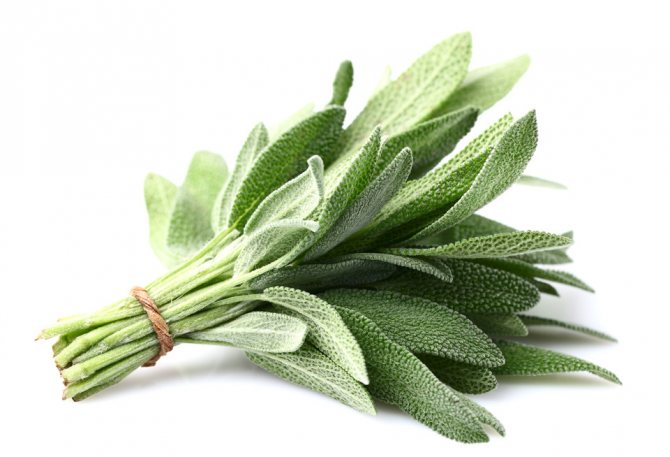
Sage is one of the most effective herbs used after a stroke. It has a positive effect on the functioning of the entire body, namely:
- eliminates the inflammatory process;
- has a positive effect on blood clotting;
- accelerates blood circulation;
- calms down.
Many people are of the opinion that sage is the most effective folk remedy for treating stroke. Improves brain function, thereby restoring memory and speech function. To prepare the decoction, you can use both fresh raw materials and dried herbs. To prepare the infusion, you need to add 1 tbsp to a glass of boiling water. l. sage. The medicine must be infused for an hour. Then strain and take twice a day.
A warm bath with the addition of sage herb has a positive effect on overall health. To do this, pour 350 g of sage infusion into the prepared bath. The session should last about 20 minutes. It is recommended to carry out the procedure every day for a month.
Sage tea to improve performance
Since ancient times, a recipe for a special tea attributed to the Greeks has been known, which is why it is called Greek or inspiration tea.
Take juice (½ lemon), buckwheat honey (2 tsp), to which sage essential oil (3 drops) was previously added. Separately, black tea is boiled and brewed, into which freshly squeezed orange juice (100 ml) is later poured. The mixture is heated again, but does not boil. Pour the honey-lemon mixture into a cup of prepared orange tea and season with 1 tbsp. l. cognac or rum (gin). This should be taken warm.
Aromatic hydrocarbons and antioxidants of sage essential oil are substances that prevent the formation of atherosclerotic plaques, stop the development of atherosclerosis, restore memory processes, and resuscitate amino acids that affect the functioning of brain functions. This tea is an excellent prevention of dementia (dementia) and Alzheimer's syndrome.
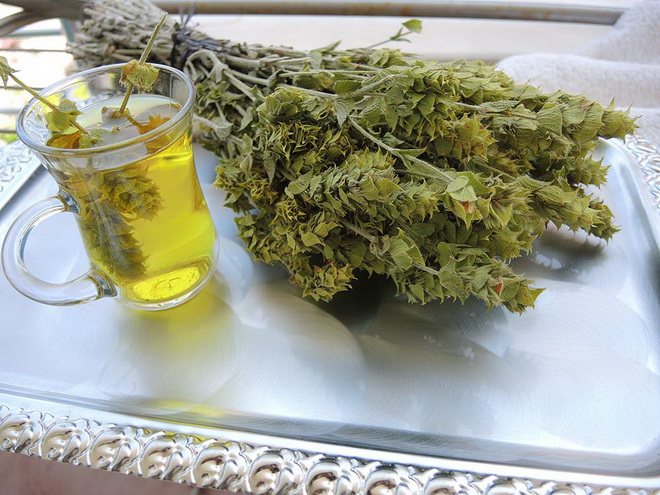
Delicious and healthy recipe
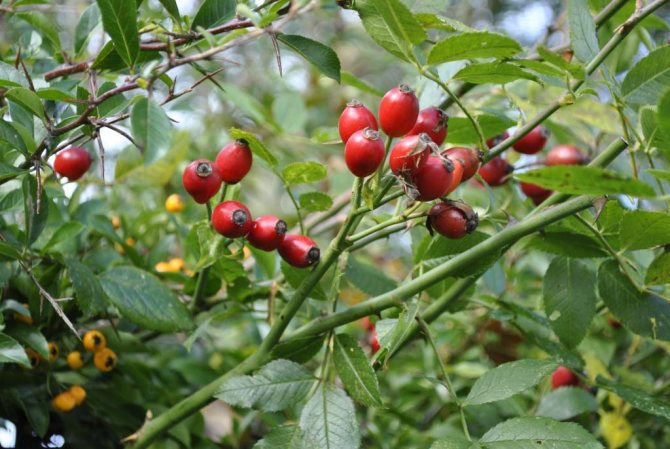
With the help of rose hips you can improve the patient's condition. Thanks to the unique composition of the plant, which includes minerals, acids, astringents, and ascorbic acid, the general health of the patient improves. In addition to all this, rose hips have a pleasant taste. You can prepare a healing drink quite quickly and simply. The whole process will not take much time. You are allowed to drink this delicious medicine an unlimited number of times. Rosehip thins the blood well and improves the functioning of blood vessels.
How to restore motor activity using laurel oil?
During the rehabilitation process, experts recommend using laurel leaves, which almost every person has at home. To restore the patient’s motor activity, it is recommended to prepare an ointment from laurel. For this you need a bunch of spicy leaves and any vegetable oil. To prepare it, make a powder from the leaves. Then pour the mixture with oil and mix thoroughly until a homogeneous consistency is obtained. The ointment should infuse for 50 days. It is important to shake the contents from time to time. After preparing the healing oil, you should strain it and put it on the fire. Wait until it boils and remove from heat. Apply the resulting cooled mixture to affected and paralyzed areas.
Essential oils
If paralysis is observed after a stroke, the rehabilitation process involves aromatherapy. Essential oils help speed up the recovery process, normalize the psychological state, and also help improve well-being. Microdosages of essential oils increase the effectiveness of tissue regeneration and normalization of brain function. The most effective oils in the post-stroke period are oils from plants such as:
Immediately after a stroke, oils with a calming effect, namely pine, valerian, lavender, and chamomile, can be used to normalize blood pressure and reduce psychological stress. They can also be used to prevent blockage of blood vessels during stroke and heart attack.
The medicinal properties of fir oil and the use of this product have a good effect on the body and help to normalize blood circulation as quickly and effectively as possible, as well as reduce blood pressure. The results of the application can be seen literally after just a few procedures. It can be taken internally or used for massage. This remedy allows you to quickly restore the functioning of paralyzed limbs.
The medicinal properties and use of fir oil make it possible to restore the functioning of affected blood vessels, as this remedy helps eliminate blood clots and cholesterol plaques. In addition, this remedy is a good prevention of atherosclerosis.
If the stroke has affected motor function, then for aromatherapy you need to use stimulant oils, namely nutmeg, ginger, verbena. After the patient’s well-being has normalized, it is recommended to use aromatic oils of sage, lemon balm, rosemary, and pine needles.
Bay leaves have found wide use in folk medicine, which helps restore motor activity. To prepare the oil, crushed bay leaves must be mixed with crushed pine needles and butter. The prepared product should be rubbed into paralyzed areas of the body.
Essential oil therapy requires strict medical supervision. In the first few days of their use, it is imperative to monitor blood pressure readings.
Eliminate unpleasant symptoms with herbal remedies
After a stroke, many patients experience complications such as dizziness and weakness. To eliminate unpleasant symptoms, you need to use products made from several herbs. Such a product must contain natural components that have a positive effect on brain function. To prepare an effective decoction, you must use:
- hawthorn;
- motherwort;
- meadowsweet;
- rose hip.
In one bowl, combine all ingredients in equal proportions (take 30 g of each herb). Mix well and pour boiling water (about 1 liter of water). Take the product before meals three times a day.
Universal formulations based on vegetables, honey and citrus fruits
Depending on the consequences after a stroke, you can use various gifts of nature, which help restore memory, restore the ability to speak coherently and formulate your thoughts, and also serve as excellent methods of rehabilitation after a stroke using folk remedies :
- Lemon is a natural antioxidant. If there is no allergy, it can be actively used for recovery after a stroke. A kilogram of ripe, washed lemons is passed through a meat grinder along with the peel. The patient should be given lemon pulp every day, adding a little honey.
- Combine half a kilogram of lemons and oranges, grind them in a meat grinder and add nuts and dried apricots to the citrus porridge. Pour a liter of liquid honey and leave for a couple of weeks in a dark place. 1 tsp. It is given to the patient three times a day to restore memory.
- Dry pine needles in the amount of five tablespoons are poured into half a liter of boiling water, infused and strained. Add half a lemon to the hot broth and give the patient one hundred grams of the mixture to drink before meals for two weeks. They take a break for a month and repeat the course of treatment.
- To restore speech skills, the patient should be given onion juice and honey, combined in equal proportions. The composition stimulates blood circulation and forces the patient to develop tongue movements. The medicine is given one tablespoon before meals.
- one of the folk remedies after a stroke . The root vegetable is cut into thin slices or rings and placed under the tongue. The vegetable is naturally bitter and causes a burning sensation in the mouth. This forces the patient to actively work with the tongue and helps restore speech.
- Beet kvass. Vegetables are grated (1 kg) or cut into pieces, after washing and peeling. The raw materials are placed in a bottle and 100 g of sugar, a pinch of salt and a piece of bread, preferably rye, are added. The jar is filled to the top with warm water and the kvass is kept for three days. After infusion, drink half a glass (3 times a day) for 60 days.
The rehabilitation period for any consequences takes a lot of time. To speed up the healing effect, you need to change your diet and diet, saturating it with vitamins and eliminating harmful foods. You should definitely eat dried fruits and nuts, which improve brain activity and restore memory. to combine diet and treatment after a stroke with folk remedies with therapeutic exercises under the supervision of a physiotherapist.
Healing properties of pine needles
To eliminate the consequences of a stroke, it is necessary to prepare an infusion from the cones. The needles have beneficial properties, namely:
- relieves the inflammatory process;
- fights harmful microorganisms;
- increases immunity;
- cleanses blood vessels and improves their functioning;
- accelerates blood circulation.
Many people use pine cones for post-stroke therapy. Treatment of stroke with folk remedies, according to patients, has a positive effect on overall health. To make the most effective remedy, you must use only high-quality buds. They must be disclosed. To prepare the medicine, you should thoroughly rinse the cones under running water. Then place them in a container and fill with water. You can use any jar for this. The medicine should be infused for about 14 days. Before drinking the infusion, you need to strain it. The dose is 1 tsp. The duration of the course of such therapy must be discussed with a doctor, since it is necessary to responsibly approach the process of treating stroke with folk remedies. Pine cones can be harmful if you prepare a decoction from them incorrectly.
Most effective home remedies
Sage is used to eliminate the consequences of a stroke, as it has a positive effect on the functioning of many organs and systems, namely:
- eliminates inflammation;
- normalizes blood clotting parameters;
- relaxes the nervous system;
- normalizes blood circulation.
This plant helps restore speech functions and restore memory. Sage decoction can be prepared from fresh and dried raw materials. To do this you need to take 1 tbsp. l. plants, pour 1 tbsp. boiling water and bring to a boil. Remove from heat, wrap and leave to brew for 1 hour. Then take this remedy 10 times a day.
Pine cones are very helpful in eliminating the consequences of a stroke; the recipes are very simple and also have a high degree of effectiveness. In addition to its bactericidal properties, it helps strengthen the body's defenses due to its high content of ascorbic acid.
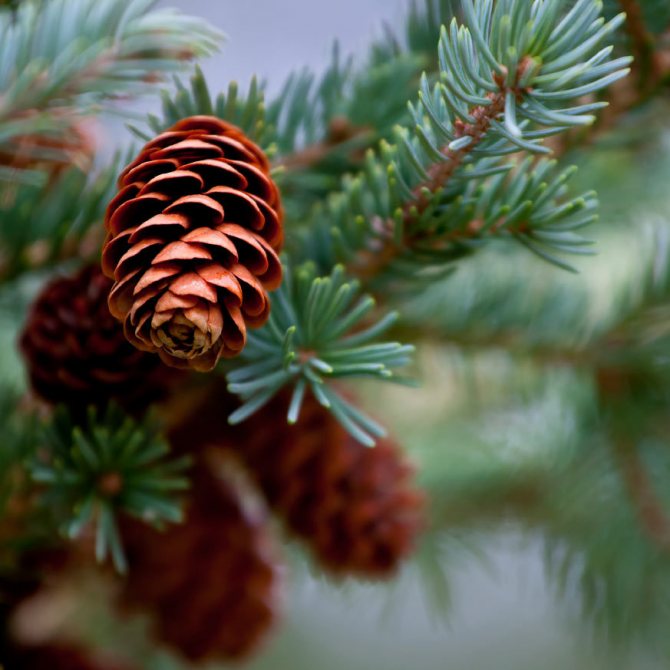
The cones from which the solution is prepared must be open. There are many recipes for pine cones, but among the most effective are the following:
- fill the container with pine cones;
- fill the contents of the jar with water so that it completely covers them;
- leave the product for at least 2 weeks in a dark place;
- strain the tincture before use;
- take 1 tsp. in the morning on an empty stomach.
It is worth remembering that pine cones can be replaced with spruce ones. The recipe is very convenient because you can easily get the raw materials for preparing the medicine.
You can prepare an alcohol tincture based on cones. To do this, you need to take 300 ml of alcohol and pour it into 6 cones. Leave to infuse in a dark place for a week, then add 1 tsp. apple cider vinegar. It should be taken in small dosages (1 teaspoon each) along with honey or tea.
The use of dandelion tincture in vodka shows very good results. This is a natural anticoagulant that prevents the accumulation of harmful substances on the walls of blood vessels, preventing the development of thrombosis.
To prepare the tincture you will need to take 0.5 tbsp. dandelion roots and 0.5 liters of vodka. Leave the mixture to infuse for 14 days. According to application, 1 tsp of dandelion vodka tincture is needed. add to tea and consume in the morning.
Licorice has good healing properties. It is included in many medications. Where licorice grows and how to collect it correctly is of interest to many people who want to prepare medicinal raw materials themselves. It grows at the mouths of large rivers. To prepare the medicine you need to take 4 tbsp. l. tangerine zest, rowan berries, elecampane roots and licorice. Then add 2 tbsp to this mixture. l. burdock and angelica roots, chicory and wild rosemary, as well as 3 tbsp. l. marina grass root. Prepare a healing infusion from this mixture, and then use it daily, consuming in small quantities. Knowing where licorice grows, you can collect high-quality plant materials that will have a good healing effect.
Mumiyo during the rehabilitation period
In folk medicine, there are many recipes for the preparation of which mumiyo is used. This component can be used not only for therapy, but also for the prevention of many diseases. Thanks to natural material, the patient’s health can be improved, since the product activates brain activity and improves blood circulation. Eliminates headaches, relieves fatigue, has a positive effect on the functioning of the nervous system, and eliminates convulsions after a stroke. Treatment with a folk remedy allows you to restore the body. Mumiyo is often added to natural collections, but sometimes taken separately. To prepare the product, the substance is mixed with water and taken on an empty stomach (approximately 300 mg per 28 ml of water). After 11 days of taking the drug, you feel better and your headaches stop.
You should know that the process of treating the consequences of a stroke with folk remedies should be carefully monitored by the attending physician. To prepare the most effective and healthy product, mumiyo is mixed with natural honey. It is advisable to add milk to the main mass. All ingredients are thoroughly mixed and taken orally.
Spasticity after stroke treatment with folk remedies
A stroke is characterized by an acute circulatory disorder in which the patient experiences symptoms of damage to the central nervous system. The goal of drug therapy for stroke is to prevent the development of irreversible processes, as well as to eliminate symptoms. Thus, modern remedies effectively treat headaches after a stroke and eliminate them in the shortest possible time.
Specialists at the Yusupov Multidisciplinary Hospital provide emergency assistance to patients with strokes. Comprehensive diagnostics allows you to determine the severity of brain damage and select appropriate medications after a stroke for recovery.
Drugs after a stroke to improve cerebral circulation
The development of a stroke is associated with circulatory disorders as a result of blockage of the lumen of a vessel or a violation of its integrity. After a stroke, a “therapeutic window” period begins, during which it is important to provide the patient with emergency assistance to prevent irreversible changes.
In the acute period, patients are prescribed medications after a stroke to improve cerebral circulation.
So, in the first hours after a stroke, the patient is prescribed drugs to reduce blood clotting, such as Aspirin, Warfarin. Ticlopidine. These medications reduce the likelihood of a recurrent attack.
However, uncontrolled use of medications is unacceptable, as they can cause intense bleeding.
Specialists at the Neurology Clinic of the Yusupov Hospital use medications after a stroke to restore blood circulation and also eliminate symptoms. All medications used in the treatment of stroke at the Yusupov Hospital are registered in the Russian Federation.
Spasticity after stroke: treatment
Muscle spasticity after a stroke, the treatment of which appears during the first months after the attack, which is associated with an increase in muscle tone. At the initial stage of development, increased muscle tone is not a pathology; it can be successfully treated.
Muscle spasticity can cause the patient to lose their ability to work, as well as the formation of contractures. To reduce muscle hypertonicity, various means are used:
- myorexalants. Their mechanism of action is based on a decrease in muscle activity;
- medical massage;
- physiotherapy;
- manual therapy.
Neurologists, exercise therapy instructors and rehabilitation specialists at the Yusupov Hospital create a comprehensive therapy program for the patient, including modern methods to eliminate symptoms and consequences.
Headache due to stroke
Pain can appear both during a stroke and after an attack. Each type of stroke is characterized by certain pain sensations:
- With a hemorrhagic stroke, terrible headaches are noted after the stroke. The pain syndrome in this disease is accompanied by speech impairment, confusion, and paralysis of the limbs;
- ischemic stroke is manifested by a moderate headache;
- Subarachnoid hemorrhage is characterized by a sudden bilateral headache, the accompanying symptoms of which are: vomiting, tension in the neck muscles, and confusion.
If a patient at the Yusupov Hospital has a headache after a stroke, specialists will determine how to treat it after establishing the causes of the symptom. To eliminate headaches, in most cases, patients are prescribed painkillers: Ketorol, Pentalgin, Analgin, Movalis.
Depression after stroke: treatment
After a stroke, not only the physical but also the psychological condition of the person deteriorates. Thus, pain after a stroke on the paralyzed side and dysfunction can cause depression. To improve the emotional state, the patient can be prescribed antidepressants, which are taken under the supervision of the attending physician.
At the Yusupov Hospital, experienced psychologists work with patients who have suffered a stroke, who help the patient adapt and establish contact with people around him. The Yusupov Hospital has created comfortable conditions for long-term treatment of patients, which has a positive effect on their well-being.
Which mixture effectively eliminates severe pain after illness?
Recipes containing honey can improve blood circulation and boost immunity. Absolutely any type of product is suitable for this. Treatment of stroke with traditional methods helps restore the body and strengthen the immune system. Doctors are of the opinion that linden honey is the healthiest. To prepare the remedy, you need to combine the main ingredient with kombucha tincture (230 g of honey per 55 ml of tincture). Add a few drops of mint to the main mixture. Approximate dose - 1.5 tbsp. l. You can add lemon to honey, since these ingredients are in perfect harmony and have a positive effect on the overall health of each person. It is very useful to eat honey on an empty stomach. Thanks to this action, the body is saturated with useful vitamins and microelements. Treatment of the consequences of a stroke with folk remedies does not always have an effective effect on overall health, so the doctor may prescribe medications.
A remedy that helps get rid of severe complications
Many people call this composition the elixir of life, since this folk treatment for stroke helps eliminate unpleasant symptoms of the disease and improves blood circulation. To prepare it you need:
- Chop one clove of garlic.
- Combine garlic with sunflower oil.
- Place the resulting mixture in the refrigerator for two days.
- After this, add lemon juice to the main mixture.
- Take 1.5 tsp on an empty stomach.
- The duration of treatment is 2 months.
Before using a prescription, you should consult your doctor. During therapy, it is important to take into account the general state of health and the presence of other serious diseases.
How to improve the functioning of blood vessels?
Cranberries have a wonderful effect on human health and eliminate dizziness after a stroke. Treatment with folk remedies is effective if you carefully read the recipe for preparing the infusion and approach therapy responsibly. Cranberry improves the patient’s condition after a stroke, namely:
- the medicine stabilizes blood pressure;
- has a positive effect on the functioning of the cardiovascular system;
- increases immunity.
To prepare a universal recipe you need to prepare:
- 900 g cranberries;
- 400 g lemons;
- 2 tbsp. l. honey
First of all, you need to wash the berries and chop them. Combine the resulting mixture with honey and stir until a homogeneous consistency is obtained. It is necessary to infuse the mixture for a week. After this, add lemon juice to the main mass. Then send the medicine to infuse for another 12 days. Take 2 tbsp on an empty stomach. l. Cranberry helps get rid of swelling after a stroke. Treatment with folk remedies should always be supervised by a doctor, despite the fact that they seem harmless.
Post-stroke spasticity
Until now, we have hardly discussed movement disorders in our loved ones, since there is no direct connection with cognitive disorders, and we did not want to dilute the main theme of our site.
However, recent discussion of the problems that develop after a stroke - and in Russia stroke remains a very common cause of dementia - has shown that this topic is important.
I was asked to talk about it without much fuss, in simple words. I promised to try.
I read in a serious scientific journal that after a stroke, movement disorders manifest themselves in one way or another in more than 80% of patients. Due to the death of cells that previously regulated muscle function, they weaken (paresis) or turn off completely (paralysis).
Disorders of body position and coordination of movements are also possible. This is fraught with falls and, at best, a developing fear of walking independently, and at worst, a fracture. The “head problems” that appear along with this only increase the risks.
Fortunately, even in old age, the plasticity of the brain allows it to restructure itself and gradually restore lost motor functions. And here the task of doctors (and, after overcoming an acute disorder, of those around them) is to create the necessary conditions for speedy rehabilitation: the main method is physical therapy combined with physical and occupational therapy.
However, in approximately every third case, in the post-stroke period, so-called spasticity begins to develop - increased tone in the muscle, preventing it from stretching and forcibly returning the limb to a certain position, which limits overall mobility. The spasm is quite difficult to respond to physiotherapy and interferes with normal recovery. As it turned out, visitors to our site also encountered this phenomenon.
Due to constant tone, which does not decrease even at rest, changes begin to occur in muscles, tendons and joints (fibrosis, atrophy), painful deformations (contractures) and pathological postures develop, which aggravate the problem and seriously complicate the patient’s life.
Spasticity does not develop immediately, usually several months after a stroke. However, a specialist may notice the first signals after 2–3 weeks.
Initially, flabby muscles come into tone, which increases and becomes more pronounced in response to external stimuli (for example, an attempt to bend or straighten a limb).
After six months, maximum a year, spasticity turns into a problem that significantly affects the patient’s quality of life. It's getting painful.
In the upper body, the shoulder, elbow, wrist and fingers are often affected. In the lower body, spasticity may affect the hip, knee, ankle, or toes. The flexor muscles usually suffer in the arm area, and the extensors in the leg. Look at the pictures from our newspaper “Memini”.
You've probably seen something similar in patients with cerebral palsy.
Needless to say, this problem has a negative impact on a person’s ability to dress independently, eat (he is simply unable to hold a spoon), write with a pen, hygiene suffers, etc.
If spasticity is not treated, then after 3–4 years contractures—deformations of the joints—form. Bones also become deformed.
Forced painful postures arise.
I won’t write about who is to blame. I immediately turn to the question “What to do?”
The answer is simple: treat.
Treatment of spasticity may include: medication (central and local action), physiotherapy, occupational therapy. (In rare cases, a decision may be made about surgical treatment.)
The basis of therapy is the effect on the muscle, allowing it to decrease its tone. Below we will consider in more detail the role of each of these methods.
PRESCRIPTION OF MEDICINES
Oral (taken by mouth) medications most commonly used to reduce spasticity include:
centrally acting muscle relaxants – baclofen, tizanidine, etc.
anticonvulsants – clonazepam, diazepam.
Both groups of drugs help reduce muscle contraction and improve range of motion. Taking them relieves painful muscle spasms, enhances the effect of physical therapy and, as a result, prevents the development of contractures.
Unfortunately, the peculiarity of these drugs is that they act not only on spastic muscles, but on the entire body as a whole. To treat spasticity, these drugs are prescribed in large dosages, which leads to side effects such as general weakness, dizziness, changes in mood and lethargy.
This is especially unpleasant if the patient, after a stroke, begins to develop cognitive impairment without it.
For this reason, more and more specialists are inclined to replace the above-mentioned medications with injections of botulinum toxin type A.
In terms of its effect on the muscle, botulinum toxin is significantly superior to all existing medications taken in tablet form and is comparable to surgical intervention.
At the same time, muscle denervation using a toxin is an extremely simple and safe procedure that can be performed by a doctor who has undergone appropriate training. Botulinum toxin preparations are well tolerated, and the likelihood of drug-drug interactions when used is minimal.
The American Academy of Neurology recommendation specifically states the need to offer botulinum neurotoxin to patients as a method of reducing muscle tone and improving passive function in adult patients with spasticity.
In our country, three botulinum toxin preparations are widely used to treat spasticity: Botox (USA), Dysport (England), Xeomin (Germany). The latter is positioned by the manufacturer as a new generation drug, free from complexing proteins. In addition, the Chinese drug Lantox is registered in Russia, but, as far as I know, it is used mainly in cosmetology.
PHYSIOTHERAPY
Physical therapy has traditionally played an important role in the treatment of spasticity. The main components of the method include rehabilitation exercises, massage, acupuncture, thermal and electrical effects on spastic muscles, and the use of orthopedic devices.
Standard rehabilitation involves daily stretching to help restore strength to affected muscles, maintain joint range of motion, and prevent the development of contractures. Regular stretching can ease muscle contraction and reduce stiffness for a period of several hours.
Massage plays an important role in the process of restoring motor functions and preventing pathological conditions. It relieves pain, helps restore muscle performance, and improves their blood supply. However, you can only trust a specialist to perform a massage, since spastic and hypotonic muscles require different influences.
In Russia, acupuncture is often used in complex therapy, but controlled studies conducted abroad do not show significant effectiveness of this treatment method.
Electrical stimulation is widely used to restore balance between the tone of flexor and extensor muscles.
The effect usually lasts about 10 minutes when stimulation is first applied, but after several months of similar treatments, the effect may be longer lasting.
Alternatively, a spastic muscle can also be stimulated directly to fatigue it.
In the treatment of spasticity, limb fixing bandages, bandages, tourniquets, splints, and orthoses can be used. They allow you to support and straighten a spastic limb, as well as correct its deformity and improve function.
Today, medical engineering has developed many orthopedic devices that provide not only immobilization and fixation in the correct position, but also deep pressure and maintenance of heat in the tissues.
Modern devices include a setting mechanism that controls the required function: from fixation with a lock to providing the necessary movements with outside help.
OCCUPATIONAL THERAPY OR OCCUPATIONAL THERAPY
Occupational therapy is practical activities specially selected by a doctor that allow the patient to restore self-care skills after a stroke.
This can be considered a special version of physical therapy, in which the exercise performed has a practical meaning: fastening a button, using cutlery... With the help of occupational therapy - by regularly repeating the same movements - patients restore lost skills of daily life, whenever possible.
Otherwise, when it is not possible to restore some important actions, occupational therapy allows you to choose devices that compensate for the loss of a useful skill, or to form new motor patterns, alternative to those used before the disease.
In other words, functional therapy aims to preserve all functions of the limb by restoring old motor patterns and/or creating new dynamic patterns based on a new muscle arrangement that allows normal movement. An important role here is played not only by the diligence of the patient, but also by the help of the person caring for him.
SURGICAL INTERVENTION
The two main categories of surgical interventions used for spasticity are performed at the level of the nervous system (neurosurgery) or bones, tendons and muscles (orthopedic surgery). The most significant indication for surgical treatment is the development of contracture. In this case, orthopedic surgery is often the only treatment for spasticity.
With the help of surgery, muscles can be denervated, tendons and muscles can be released from contractures, lengthened or repositioned, thereby reducing spasticity. Muscles can be denervated by cutting off specific nerves where they exit the spinal cord (dorsal rhizotomy).
This surgery is used primarily to treat severe spasticity in the leg muscles that interferes with the patient's mobility.
To briefly summarize, the ideal option is to relax with botulinum toxin (lasts about 3-4 months) and develop. Just the prices...
Although I read two studies. In one, the authors argued that if you count the costs that can be avoided thanks to botulinum therapy (nurses, aids), then overall it turns out to be even beneficial.
In another scientific language it is said approximately the following: it is better to spend money and get results than to take pills in large doses (in our country, by the way, they are also not free), without much success.
True, both studies were conducted abroad.
So it goes.
Source: https://memini.ru/discussions/24661
Reviews from doctors
Traditional methods of treatment, according to many experts, are no less effective than expensive medications. Treatment with folk remedies after a stroke should be carried out under the supervision of a specialist. You should know that grass is not a harmless remedy. Traditional recipes have exactly the same strong effect as antibiotics, but are less likely to cause side effects. Before using any medicine, you should consult your doctor, since during the treatment process it is important to take into account the individual and physiological characteristics of each patient. With the help of complex therapy, it is possible to help the patient recover faster and return to a full lifestyle. First of all, it is important to restore health and improve the functioning of internal organs. Doctors strongly recommend using massage and breathing exercises in addition to medication. Healing baths are no less useful.
Cognitive impairment after stroke: risk of dementia
Dementia is a common complication of stroke. If the burning and cutting pain after a stroke are intense symptoms that quickly intensify, then dementia develops gradually.
Statistics indicate that up to 35% of people who have had a stroke will develop dementia. However, with timely treatment, abandonment of bad habits and the absence of concomitant pathologies, the likelihood of this complication is low.
Often, patients experience both general symptoms, for example, pain in the leg after a stroke, and specific symptoms for a particular type, for example, urinary retention may occur after a spinal stroke, which is treated by specialists at the Yusupov Hospital using effective means.
The Neurology and Rehabilitation Clinic provides emergency care to patients after a stroke, as specialists work 24 hours a day, 7 days a week. You can make an appointment with a neurologist or rehabilitation specialist by calling the Yusupov Hospital.
How is onion useful for a patient?
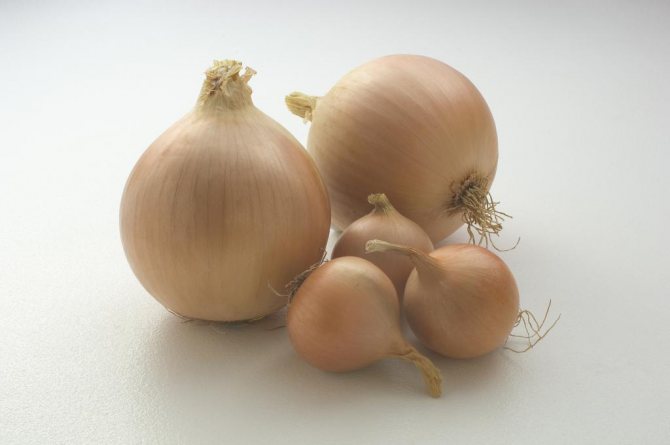
Just recently it turned out that onions have incredible healing properties. The vegetable contains an active compound that is easily absorbed by the body. When the substance enters the blood, blood circulation and brain function improves. The product is able to activate and rejuvenate the cells that are responsible for mental activity. To prepare the product, you need to combine honey with onion juice in a ratio of 2:4. A single dose is 1.5 tbsp. l. The duration of the course of treatment is determined strictly by the doctor.
Why is it impossible to treat a disease without proper nutrition?

Many experts have determined that fatty foods provoke strokes. The process of treating cerebral stroke with folk remedies includes compliance with nutritional rules. People who eat right and lead a healthy lifestyle are least likely to develop the disease. Fatty foods and fast food negatively affect the functioning of the body's cardiovascular system, since such foods contain a large amount of fats and carbohydrates. High-calorie and fatty foods contribute to the appearance of cholesterol plaques, which can narrow blood vessels and clog them. For this reason, a stroke may occur. When normal blood flow stops, a hemorrhagic stroke occurs. Treatment and recovery with folk remedies should be carried out under the constant supervision of a doctor. Due to a sharp increase in pressure in the arteries, serious complications can occur, so it is better not to self-medicate. During therapy, the patient must adhere to the basic rules of proper nutrition. The attending physician is obliged to draw up a sample menu for the patient.
Remedies for different types of stroke
There is ischemic and hemorrhagic stroke. The main criterion for their separation is the cause of their occurrence. Ischemic stroke occurs as a result of blockage of blood vessels, and hemorrhagic stroke occurs due to their rupture and accumulation of blood in nearby brain tissue.
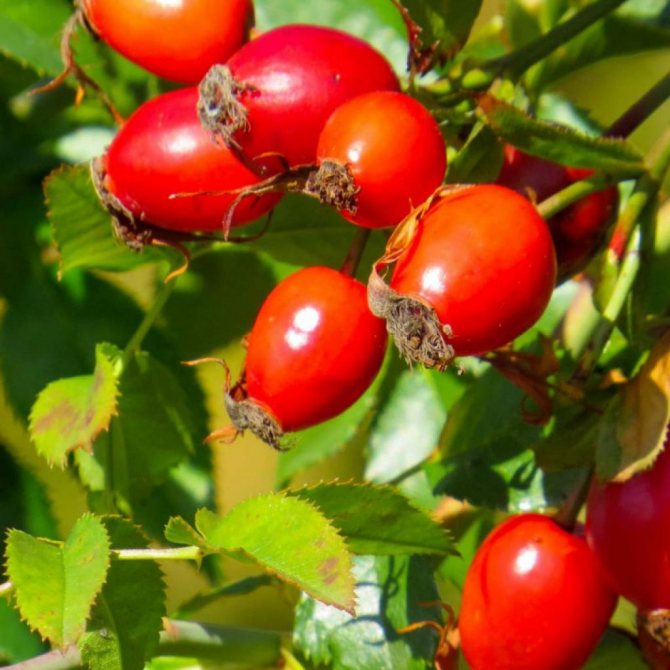
Depending on the type of lesion, folk remedies are selected individually. For ischemic stroke, it is recommended to consume bananas and mountain arnica decoction. In case of hemorrhagic lesions, it is recommended to drink tea from orange leaves, and you should also apply bay oil to the paralyzed areas.
What exactly should nutritional therapy be like?
Doctors recommend not to overeat and not eat food after 19:00. In addition, the diet should contain a large amount of proteins, as they saturate the brain with useful substances. Animal fats should be excluded and a sufficient amount of healthy elements should be consumed. It is necessary to include more vegetables, fruits and greens in your diet. Herbs for the treatment of stroke do not contain all the elements necessary for the body. Therefore, you should include in your diet those foods that contain antioxidants; they saturate the brain with oxygen. You should include all ingredients with magnesium in your diet. This element effectively improves brain activity.
What patients say
In their reviews, patients confirm that if you do not follow the rules of proper nutrition, a stroke can happen again. To prevent this, treatment should be approached comprehensively. The rehabilitation period plays an equally important role, so you need to lead a healthy lifestyle. Almost all patients recommend giving up alcohol and cigarettes, since nicotine has a detrimental effect on the functioning of the cardiovascular system. Fatty, spicy, smoked foods are harmful to health and increase blood cholesterol levels. Treatment of stroke at home with folk remedies should be comprehensive. Many patients note that pine baths and herbal infusions helped them a lot.
The best prevention of the disease is moderate physical activity, a healthy lifestyle, proper nutrition and regular medical examinations. It should be remembered that self-medication can greatly harm the patient and worsen the overall health. Negligence in the treatment process can lead to death. Stroke is a serious illness, so only a doctor should monitor the process of treating stroke with folk remedies. How to treat the consequences? This interests many patients. This question can only be answered reliably by a doctor after a complete medical examination of the patient. Everything will depend on the specific situation and the general condition of the patient.
